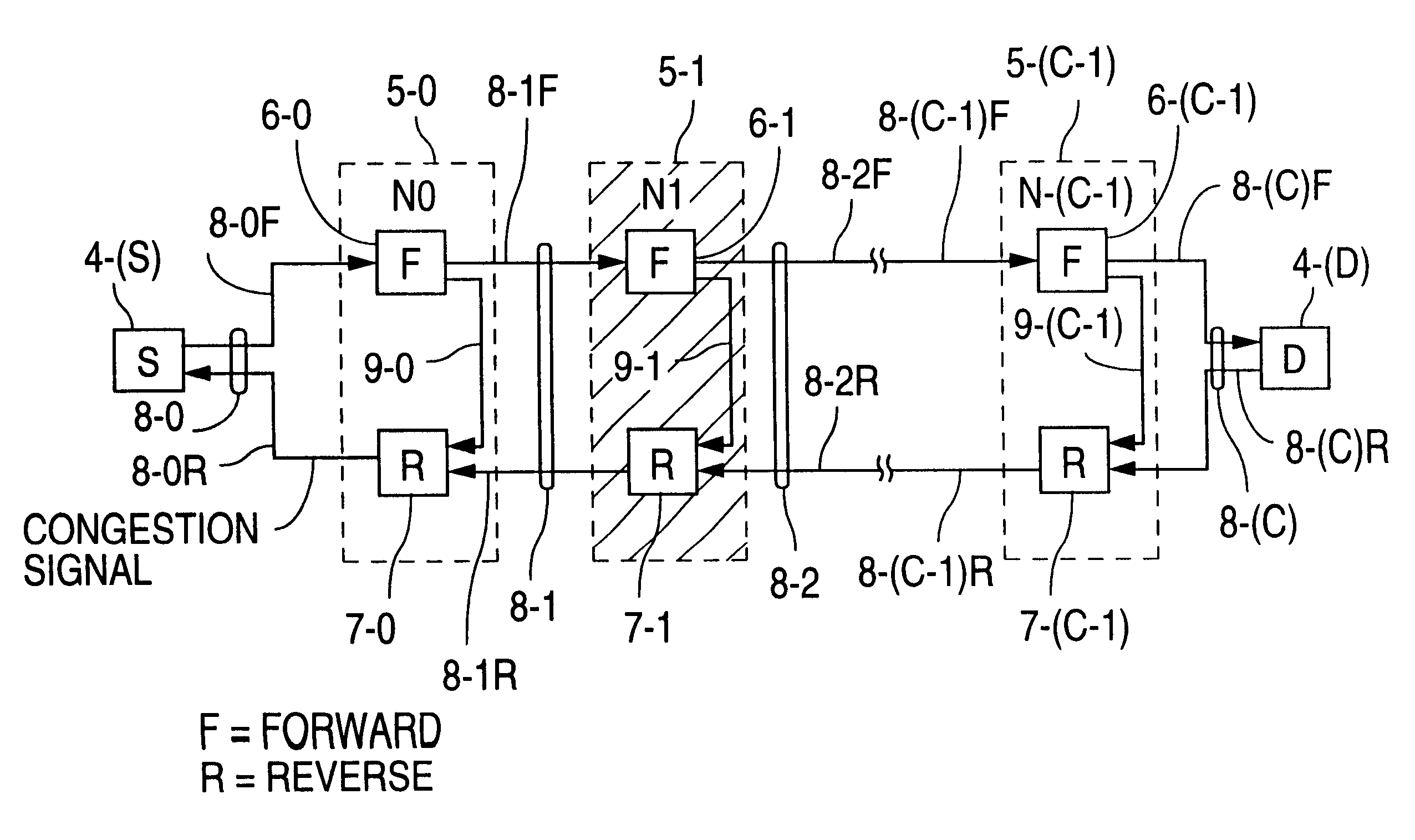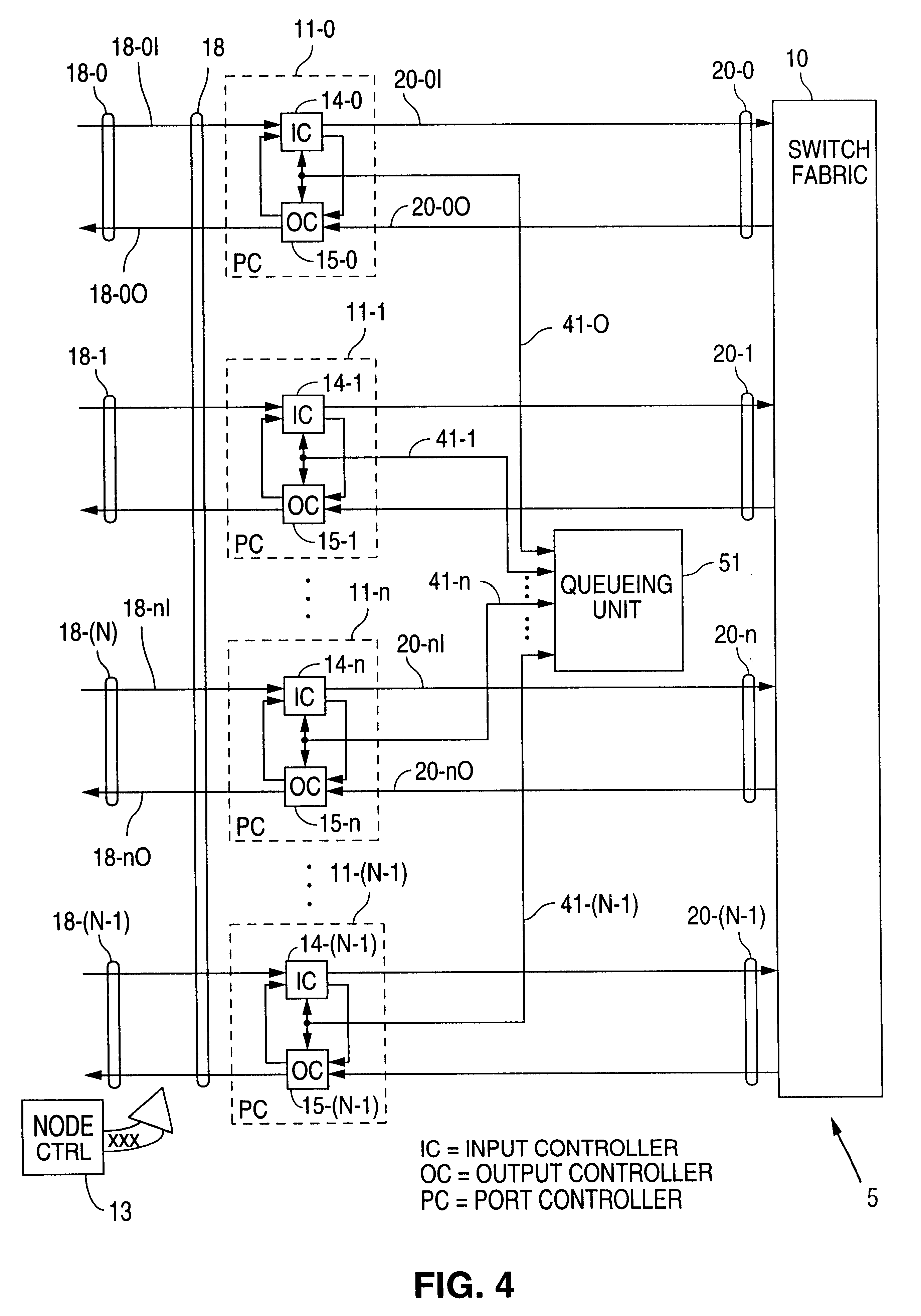Fair discard system
a technology of information transfer and discarding, applied in the field of information transfer systems, can solve problems such as queues, performance degradation, and congestion
- Summary
- Abstract
- Description
- Claims
- Application Information
AI Technical Summary
Benefits of technology
Problems solved by technology
Method used
Image
Examples
embodiment
Simple Node Embodiment
FIG. 4
In FIG. 4, one typical embodiment of a node having the signal paths of FIG. 3 is shown. In FIG. 4, the node 5 includes N links 18-0, 18-1, . . . , 18-n, . . . 18-(N1). Each of the links 18 of FIG. 4 are analogous to the bi-directional links 8 of FIG. 2. In FIG. 4, the links 18-0, 18-1, . . . , 18-n, . . . , 18-(N-1) connect to port controllers 11-0, 11-1, . . . , 11-n, . . . , 11-(N-1).
The node of FIG. 4 is used in connection with the information transfer of FIG. 3, for example, by having one of the links 18, for example, input link 18-0 in FIG. 4, connect through switch fabric 10 to another one of the links 18, for example, link 18-n. In the example described, the switch fabric 10 functions to connect the link 18-0 to the link 18-n.
In an example where the node of FIG. 4 represents the node 5-1 in FIG. 2, the link 8-1 in FIG. 2 is the link 18-0 in FIG. 4 and the link 8-2 in FIG. 2 is the link 18-n in FIG. 4.
With such a connection, the node of FIG. 4 conne...
PUM
 Login to View More
Login to View More Abstract
Description
Claims
Application Information
 Login to View More
Login to View More - R&D
- Intellectual Property
- Life Sciences
- Materials
- Tech Scout
- Unparalleled Data Quality
- Higher Quality Content
- 60% Fewer Hallucinations
Browse by: Latest US Patents, China's latest patents, Technical Efficacy Thesaurus, Application Domain, Technology Topic, Popular Technical Reports.
© 2025 PatSnap. All rights reserved.Legal|Privacy policy|Modern Slavery Act Transparency Statement|Sitemap|About US| Contact US: help@patsnap.com



